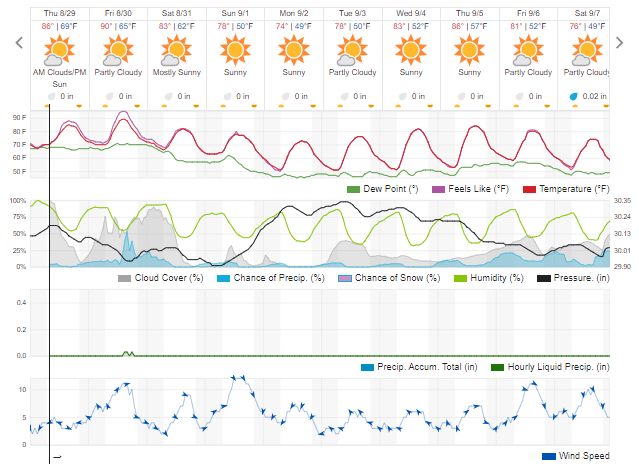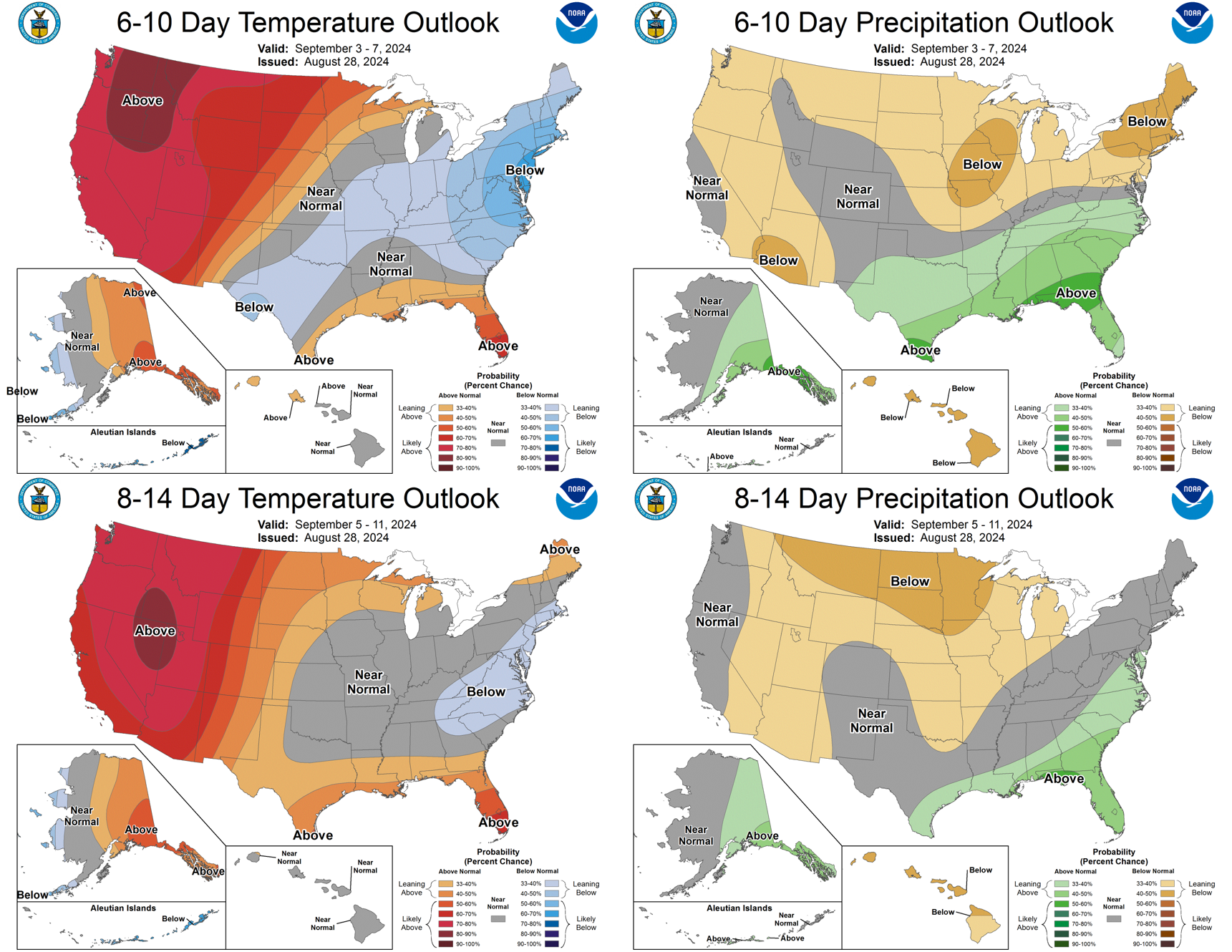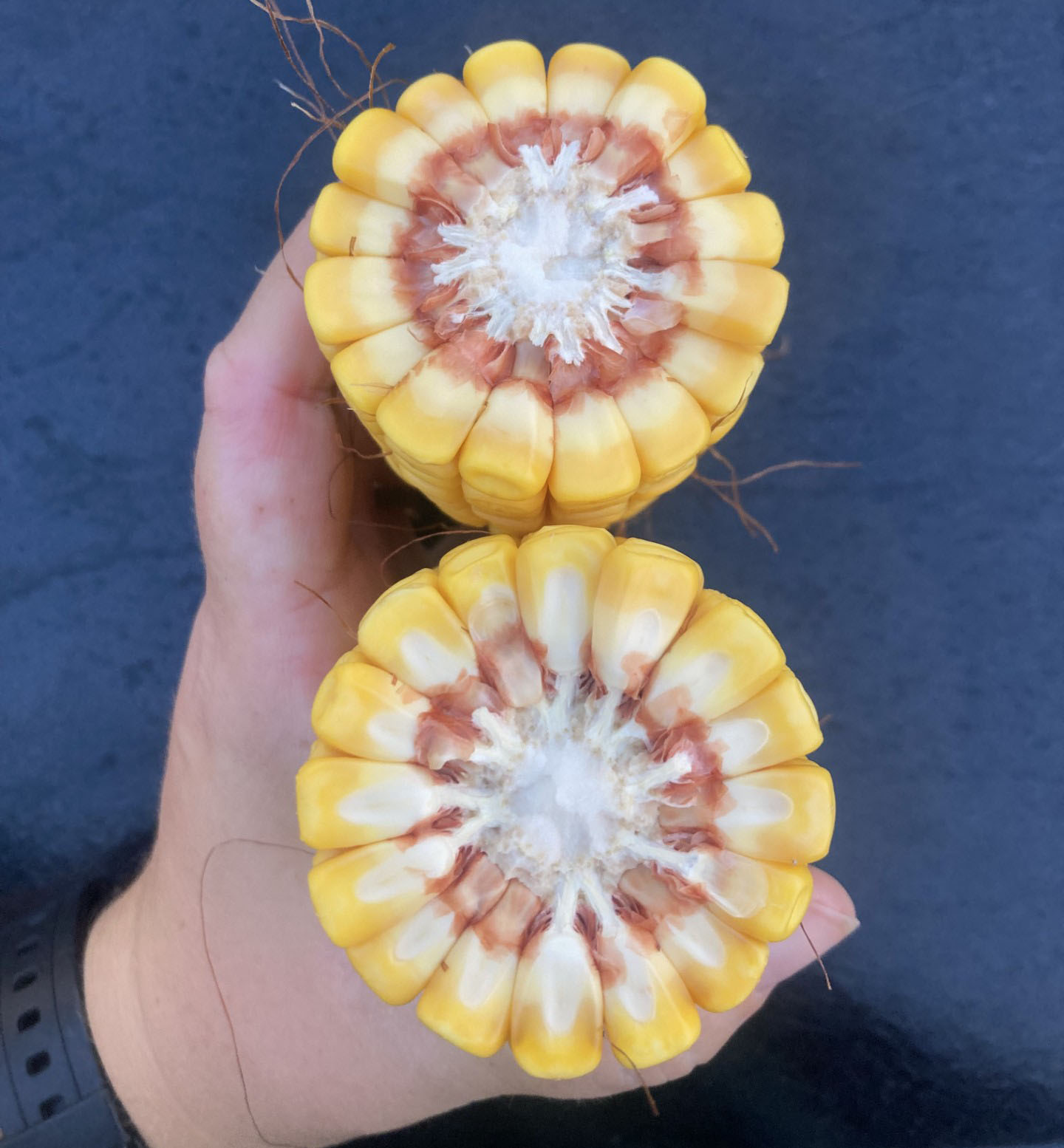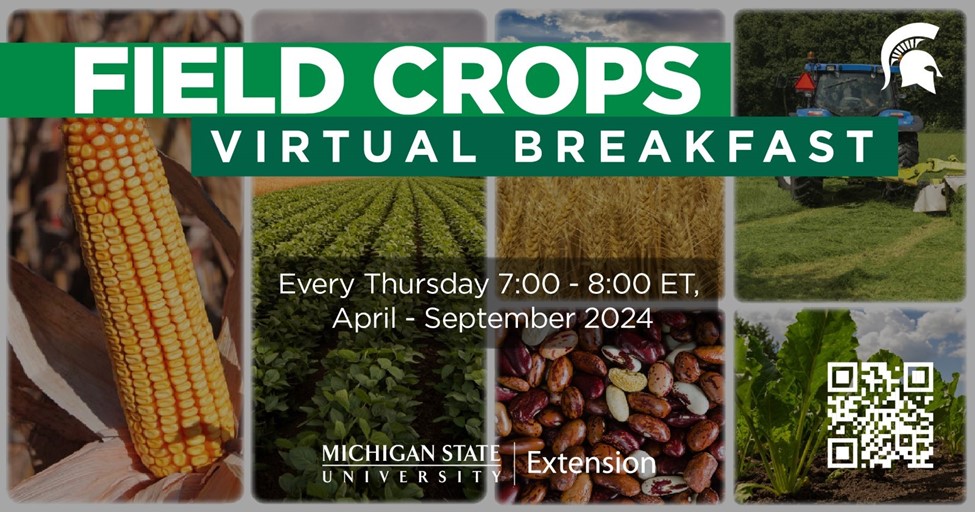Southwest Michigan field crops update – August 29, 2024
White mold and sudden death syndrome symptoms worsened in soybeans. Seed corn harvest is in progress. Milk lines progressed in R5 commercial corn.

Weather
This past week saw high temperatures and humidity with little rainfall. Tuesday, Aug. 27, was an especially hot day with a heat index of 105 degrees Fahrenheit. A storm system hit parts of southwest Michigan Tuesday night, resulting in rainfall anywhere from 0.1 inch to almost an inch. A weather front coming into the weekend could bring thunderstorms, precipitation and some cooler weather. Temperatures will increase again starting midway through next week.


Crops and pests
Most soybeans are close to R6 (full seed) or have already passed it and are progressing toward R7 (physiological maturity). R6.5 is the target stage for applying desiccants as a harvest aid in soybeans. At R6.5, the protective membrane within the pod easily separates from the seed. Soybean desiccation is a very rare practice in Michigan, but in recent years it has garnered more attention. For those interested in learning more about soybean desiccation, there will be a demonstration and speakers about it at the Soybean Harvest Equipment Field Day in Lenawee County on Sept. 26.
White mold has mostly stayed in check from the weather the past month, but this past week of high humidity, heat and lack of rainfall required difficult decisions as soybeans needed water during a critical period, but irrigation applications also encourage white mold development. Sudden death syndrome (SDS) has also been found in many fields this year and is exacerbated by insufficient irrigation. As plants start to yellow in the fields, make sure it is due to senescence and not SDS before reducing irrigation. Keep an eye out for red crown rot, which is not currently confirmed in Michigan, but it is in Indiana and Illinois. The leaf symptoms are similar to those of SDS, but the base of the stem has a red, slightly raised appearance. If you suspect you have it or have found it in a field, send pictures and a sample in to Michigan State University Extension field crops pathologist Marty Chilvers.

Corn is mostly in R4 (dough) and R5 (dent). Those that have reached R5 are progressing toward R6, which is physiological maturity for the kernel, at which point a black layer forms at the base of the kernel. Shortly after reaching R5, the corn kernels develop a “milk line,” which is the change in colors between the outer edge of the kernel and the inner edge that touches the cob. Seed corn harvest is in progress.

At this point, very little corn is within the most effective spray window of VT through R3 for tar spot. As the crop is winding down, keep an eye out for signs of ear rots and note areas where there is high pressure. Early harvest may be necessary to prevent further mold development.
Weekly water use
|
Estimated weekly crop water use for field crops in Michigan (in/week) |
||||
|---|---|---|---|---|
|
Crop |
Growth stage |
Constantine |
Entrican |
Hart |
|
Corn |
Silk, Blister, Dough, Begin dent |
1.32 |
1.17 |
1.10 |
|
Full dent |
1.20 |
1.06 |
1.00 |
|
|
Black layer |
0.79 |
0.70 |
0.66 |
|
|
Full maturity |
0.13 |
0.12 |
0.11 |
|
|
Soybeans |
R3 and R4 Begin pod/Full pod |
1.32 |
1.17 |
1.10 |
|
R5 and R6 Begin seed/Full seed |
1.32 |
1.17 |
1.10 |
|
|
R7 Begin Mature |
1.20 |
1.21 |
1.0 |
|
|
R8 95% Pods Mature |
0.24 |
0.21 |
0.20 |
|
As corn reaches the black layer stage, its water use drops by about 40%, resulting in approximately 0.12 inches of daily evapotranspiration this week. Soybeans at the first yellow pod stage or entering R7 will have a daily water use of around 0.17 inches under this week's conditions. To avoid water stress, it’s recommended to maintain at least 50% of available soil moisture for both soybeans and corn. If white mold is present in your field, consider making larger applications during each event to minimize canopy moisture. Typically, late August and early September weather reduces the need for late-season irrigation. However, this year, Michigan is under a heat advisory with hot to excessive temperatures with minimal rainfall, making precise irrigation scheduling and crop monitoring crucial. Avoid waiting for visible signs of crop stress before applying water. Late-planted crops in the area may still require significant water well into September.
The table above presents estimated crop water use for various field crops across three locations in Michigan. This data helps irrigation management decisions by showcasing potential crop evapotranspiration, calculated based on reference evapotranspiration and crop coefficients for each crop growth stage. It is crucial to note that crop water use values vary across regions due to differences in weather conditions, growth stages, agronomic practices and soil properties.
When using these values for irrigation scheduling, be mindful that they assume all applied irrigation water will be utilized by the plants without any loss. Also, these values do not account for any precipitation during the calculation week. For more tools and information on irrigation scheduling tools, please refer to: Irrigation Scheduling Tools.
Reference evapotranspiration data was obtained from Enviroweather, which also offers a model for determining potential crop evapotranspiration. To access this tool, visit Enviroweather, click on "Crops," select your crop and use the potential evapotranspiration tool by choosing your nearest weather station, the latest date of interest and other crop information.
Field Crops Virtual Breakfast Series

Maximizing wheat yields for 2025, presented by Michigan State University (MSU) Extension wheat management specialist Dennis Pennington, was the topic for the MSU Extension Field Crops Virtual Breakfast this week. Planting time, uniformity of emergence, starter fertilizer and many other factors are just the beginning of a high-yield crop. Recordings of this and all the Virtual Breakfast meetings are closed-captioned and available at the Field Crops Virtual Breakfast webpage and the MSU Extension Field Crops Team social media platforms: Facebook, Spotify, YouTube, Apple Podcasts and Twitter.



 Print
Print Email
Email